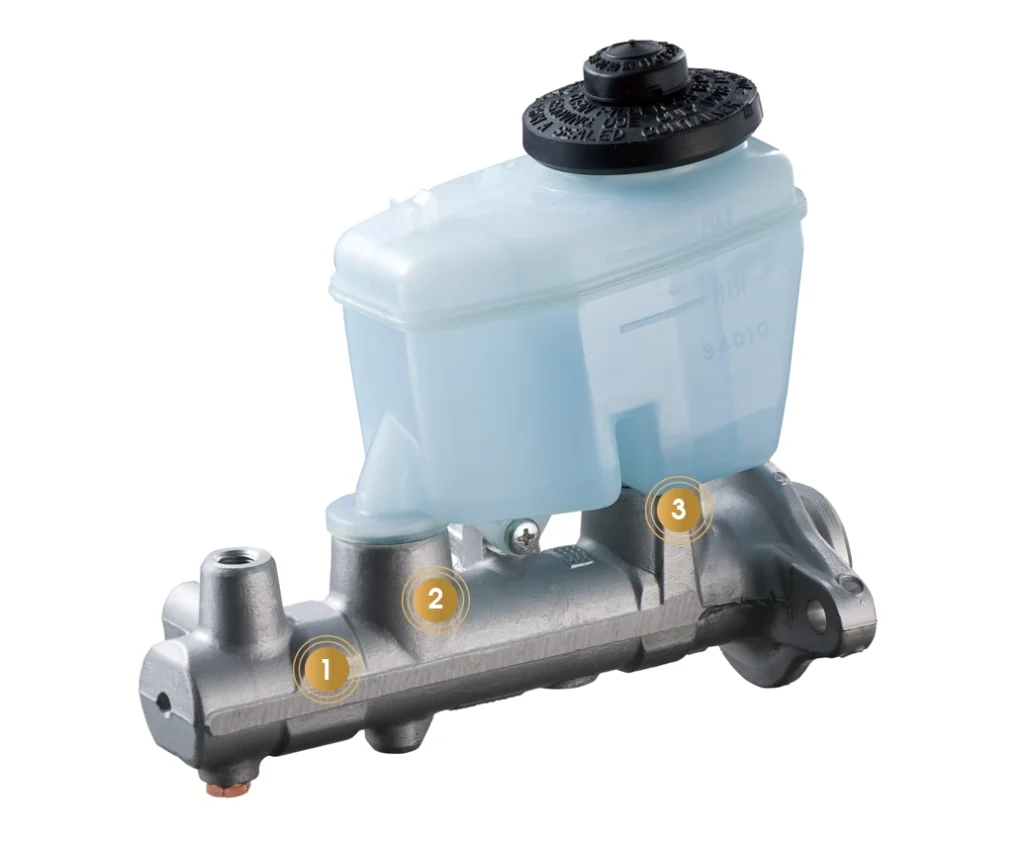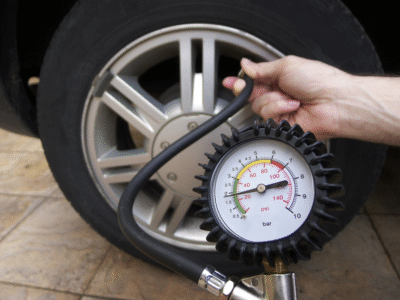
Ford Focus Clutch Master Cylinder Replacement: A Complete DIY and Expert Guide

Replacing the clutch master cylinder in a Ford Focus can feel like diving into a mechanical maze — intricate, greasy, and just a bit intimidating. But here’s the thing: with the right knowledge, a few tools, and some patience, it’s entirely doable. Whether you’re tackling this repair to fix a soft clutch pedal or planning preventive maintenance, this guide walks you through every detail — from diagnosis to installation.
- What Does the Clutch Master Cylinder Do?
- Symptoms of a Failing Clutch Master Cylinder
- How to Confirm the Issue
- Tools and Supplies You’ll Need
- Safety Preparations Before You Begin
- Locating the Clutch Master Cylinder in a Ford Focus
- Step-by-Step Replacement Guide
- Common Mistakes to Avoid
- Bleeding the Ford Focus Clutch System — Simplified
- Choosing the Right Replacement Part
- OEM vs Aftermarket Clutch Master Cylinders
- Professional vs DIY Replacement Costs
- Maintenance Tips for Longer Clutch Life
- Real-World Insights: What Ford Focus Owners Say
- Final Thoughts
- FAQs
What Does the Clutch Master Cylinder Do?
Think of your clutch master cylinder as the heart of the hydraulic clutch system. When you press the clutch pedal, this component pushes hydraulic fluid through the system to engage or disengage the clutch. Without it, your clutch pedal is just an expensive footrest.
It’s connected to:
- The clutch pedal via a pushrod.
- The slave cylinder, which controls the clutch fork.
- A fluid reservoir, usually shared with the brake system.
When this small component starts to fail, your entire shifting experience turns into a nightmare.
Symptoms of a Failing Clutch Master Cylinder
Before you tear things apart, confirm it’s the master cylinder. Common signs include:
- Soft or spongy clutch pedal — feels like pressing a wet sponge.
- Difficulty shifting gears, especially first and reverse.
- Leaking fluid near the clutch pedal or firewall.
- Low or dirty clutch fluid.
- Clutch pedal stays on the floor after being pressed.
- Intermittent clutch engagement — one moment it’s fine, the next it’s not.
If two or more of these ring true, your clutch master cylinder may be waving a white flag.
How to Confirm the Issue
Here’s a quick diagnostic checklist:
- Check for fluid leaks under the dashboard or in the engine bay.
- Inspect the clutch fluid reservoir. If it’s empty or the fluid is dark, that’s a red flag.
- Press the clutch pedal. Does it sink and stay down?
- Look for wetness around the pushrod where it enters the firewall — a sure sign of internal seal failure.
- If all else fails, use a pressure tester to check hydraulic pressure.
Tools and Supplies You’ll Need
Gather these essentials before getting started:
- Socket and wrench set
- Line wrench (for hydraulic fittings)
- Flathead screwdriver
- Pliers
- Brake fluid (DOT 4 recommended)
- Clutch bleeding kit or vacuum bleeder
- Replacement clutch master cylinder
- Rags and gloves
- Flashlight
Optional but helpful:
- A friend for bleeding the clutch (trust us, two sets of hands make life easier).
Safety Preparations Before You Begin
We can’t overstate this: safety first.
- Park the car on a flat surface.
- Disconnect the negative battery terminal.
- Wear gloves and eye protection.
- If working under the dash, use a knee pad or cushion (your back will thank you).
Locating the Clutch Master Cylinder in a Ford Focus
In most Ford Focus models (2000–2018), the clutch master cylinder is mounted to the firewall, directly behind the clutch pedal. From the engine bay, it’s connected to the hydraulic line leading to the slave cylinder and to the fluid reservoir near the brake master cylinder.
For Focus models 2012 onward, Ford integrated the clutch and brake fluid reservoirs — a small detail that changes how you handle bleeding later.
You may be interested in reading Ford Focus Clutch Repair: The Complete Owner’s Guide to Saving Your Transmission
Ford Focus Clutch Repair: The Complete Owner’s Guide to Saving Your TransmissionStep-by-Step Replacement Guide
Replacing the clutch master cylinder isn’t rocket science, but it does demand patience and precision. Let’s get into it.
Step 1: Disconnect the Battery
Always start by removing the negative cable from the battery to avoid electrical mishaps.
Step 2: Drain the Clutch Fluid
Locate the reservoir and use a turkey baster or fluid pump to remove as much old fluid as possible.
Step 3: Remove the Clutch Pedal Pin and Spring
Inside the cabin, locate the pin connecting the pedal to the pushrod. Use pliers to remove the clip and slide out the pin carefully. Set aside the spring.
Step 4: Disconnect the Hydraulic Line
From the engine bay, disconnect the hydraulic line attached to the clutch master cylinder. Expect a small amount of fluid loss.
Step 5: Remove the Master Cylinder Assembly
Unscrew the mounting bolts securing the cylinder to the firewall. Gently pull it out — twisting slightly to clear the surrounding components.
Step 6: Install the New Cylinder
Align the new clutch master cylinder with the mounting holes and attach it firmly. Reconnect the hydraulic line and ensure it clicks into place.
Step 7: Bleed the System
Use a vacuum bleeder or the classic “pump-and-hold” method:
- Fill the reservoir with fresh DOT 4 fluid.
- Have a helper press the clutch pedal repeatedly.
- Open the bleeder valve on the slave cylinder.
- Close it before the pedal is released.
- Repeat until clean fluid flows out.
Step 8: Test the Pedal
Once bled, the clutch pedal should feel firm, not soft. If it sinks again, recheck for leaks or trapped air.
Common Mistakes to Avoid
Even seasoned mechanics slip up. Avoid these pitfalls:
- Forgetting to bench bleed the master cylinder before installation.
- Using the wrong brake fluid (only DOT 4 works).
- Reusing damaged hydraulic fittings.
- Not tightening the pedal pin securely.
- Skipping the bleeding process — air pockets kill performance.
Bleeding the Ford Focus Clutch System — Simplified
If your clutch still feels mushy, you likely trapped air. Here’s a no-fuss method:
- Open the bleeder valve.
- Attach a clear hose submerged in brake fluid.
- Have a friend press the clutch pedal down and hold it.
- Close the valve, then release the pedal.
- Repeat until no bubbles appear.
Pro tip: Gravity bleeding works too — just open the valve and let fluid drip slowly until consistent.
You may be interested in reading Ford Focus Clutch Repair: The Complete Owner’s Guide to Saving Your Transmission
Ford Focus Clutch Repair: The Complete Owner’s Guide to Saving Your TransmissionChoosing the Right Replacement Part
Not all clutch master cylinders are created equal. Look for:
- OEM quality — same specs as Ford’s original.
- Durable seals and pistons — avoid cheap rubber.
- Warranty coverage — a must for peace of mind.
Trusted brands include:
- Motorcraft (Ford OEM)
- LuK
- Sachs
- Valeo
OEM vs Aftermarket Clutch Master Cylinders
| Type | Pros | Cons |
|---|---|---|
| OEM | Perfect fit, long-lasting, reliable | Expensive |
| Aftermarket | Affordable, widely available | Varies in quality |
If you’re on a budget but still want reliability, LuK and Sachs offer excellent aftermarket options.
Professional vs DIY Replacement Costs
Let’s talk money.
| Approach | Cost Range (USD) | What’s Included |
|---|---|---|
| DIY Replacement | $60–$120 | Parts and fluid only |
| Professional Mechanic | $250–$500 | Labor, parts, and bleeding |
If you’ve got a weekend free and basic tools, DIY is the smarter choice.
Maintenance Tips for Longer Clutch Life
- Change clutch fluid every 2 years.
- Avoid “riding” the clutch pedal at lights.
- Keep your hydraulic system clean.
- Fix leaks early before they ruin seals.
- Inspect the pedal mechanism periodically.
Real-World Insights: What Ford Focus Owners Say
Ford Focus drivers have mixed feelings. Some find the clutch system finicky, while others report years of smooth performance. The consensus? When you replace the clutch master cylinder correctly — and bleed it well — it restores buttery-smooth shifts.
Final Thoughts
Replacing the clutch master cylinder on a Ford Focus may not be the most glamorous task, but it’s deeply satisfying. You save hundreds, learn more about your car, and gain confidence in your mechanical skills. Plus, nothing beats the feeling of that firm, responsive pedal after a successful fix.
So grab your tools, clear some garage space, and bring that Focus back to life.
FAQs
1. How long does a Ford Focus clutch master cylinder last?
Typically between 60,000–100,000 miles, depending on driving habits and fluid maintenance.
2. Can I drive with a bad clutch master cylinder?
Technically yes, but not safely. A failing cylinder can suddenly prevent gear changes, leaving you stranded.
3. What type of fluid does it use?
Always use DOT 4 brake fluid — it’s designed to handle high heat and pressure.
4. Should I replace both the master and slave cylinders?
If one fails, the other may not be far behind. Replacing both ensures balanced performance.
You may be interested in reading Ford Focus Clutch Repair: The Complete Owner’s Guide to Saving Your Transmission
Ford Focus Clutch Repair: The Complete Owner’s Guide to Saving Your Transmission 2013 Ford Focus Transmission Fluid Level Check
2013 Ford Focus Transmission Fluid Level Check5. How do I know if air is still in the system?
The clutch pedal will feel soft or inconsistent. Re-bleed the system until it’s firm.
If you want to know other articles similar to Ford Focus Clutch Master Cylinder Replacement: A Complete DIY and Expert Guide you can visit the category Service and Parts.
Deja una respuesta






More content of your interest